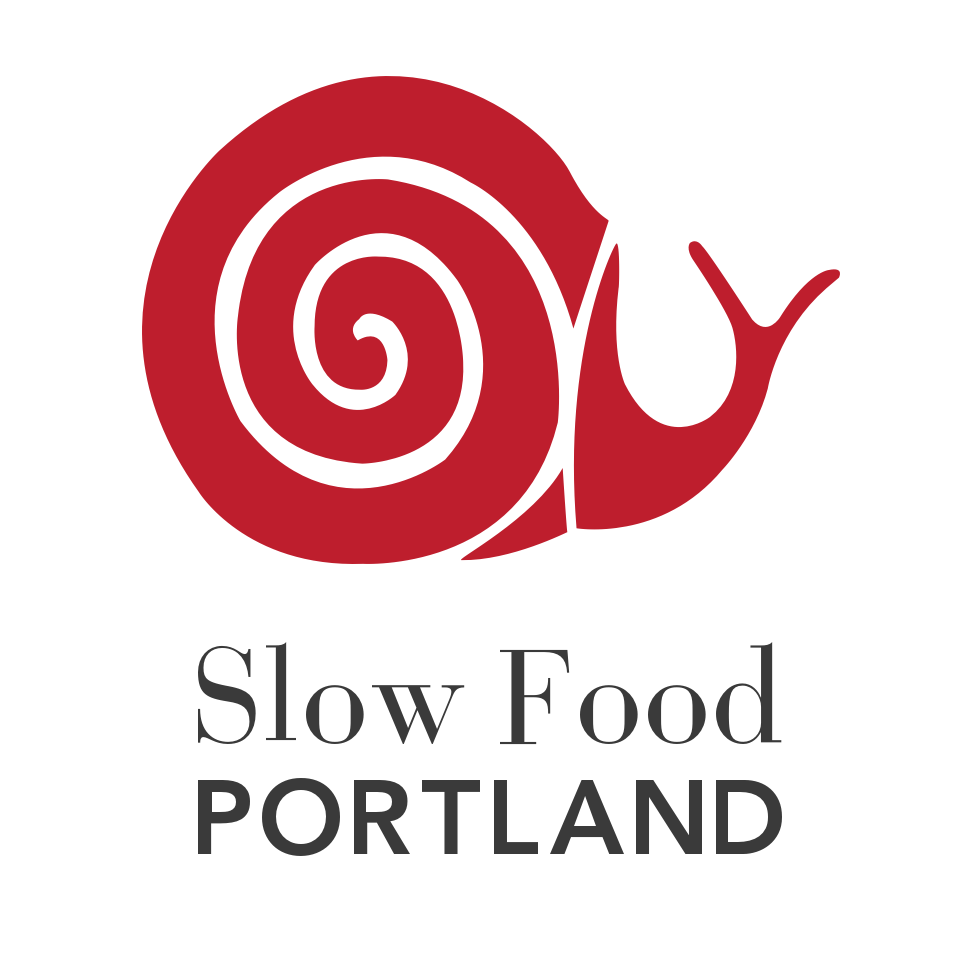Food Justice: Pollinators and Sustainable Food Systems
By Sruthi Eapen, Research and Advocacy Intern at Slow Food Portland
“It is important to understand the causes of the pollinator decline and work toward a solution. ”
When you think of farm animals, bees are usually not the first creatures that come to mind. Yet, their remarkable impact on agriculture makes them one of the most important domesticated creatures in our food system. Armies of bees are contracted every year for pollination work on farms across America. The demand is so high that beekeepers actually make half of their income by renting bees rather than producing honey1. Two-thirds of food produced in the world is reliant upon pollinators2. However, due to climate change and industrial agriculture, pollinator populations are significantly declining, leading to a potential food system crisis if no interventions are taken.
The pollinator decline is also a food justice issue given the associated food insecurity which disproportionately affects those living in poverty. Loss of pollinators would contribute to increasing food prices. Almond farmers, for example, have had to pay higher prices to rent bees over the past few years given that the crop is highly dependent on them3. This could increase the price that consumers pay to purchase almond products. If bee shortages continue, food such as fruits, nuts, and vegetables that are highly reliant upon pollinators will be produced at a lower rate than higher yield crops such as corn and potatoes4. Lower yields of fruit, nut, and vegetable crops that contribute to a balanced and healthy diet will increase the price of these items, exacerbating the nutritional health divide between income classes. From a global standpoint, 820 million people worldwide are already undernourished, and a lower global output of food would worsen this statistic4. Studies have shown that 44 million people have already become impoverished due to higher food prices5. It is important to understand the causes of the pollinator decline and work toward a solution.
With the record heat and climate extremes the world has been facing this year, the effects of climate change on daily weather are becoming more apparent to humans. To creatures like bees, these temperature changes have been becoming more apparent over the past several years, leading to declining bee populations. Warmer temperatures earlier in the year are causing flowers to bloom earlier, which causes a misalignment between when pollinators are ready to pollinate and when the flowers bloom, thus making bees less likely to reproduce6. The warmer temperatures also make bees more susceptible to disease and parasites6. Climate predictions indicate that this issue will only worsen in the future if no action is taken7.
Effects of industrial agriculture are also causing bee populations to decline. Contrary to popular belief, many bees actually live in the ground and not in hives. Farming practices such as over-tilling the soil limit these ecological niches for bees8. Planting large monoculture crops creates an even larger demand for pollinators that cannot meet the supply3. Industrial agriculture also often uses pesticides such as Neonicotinoids that lower bees’ immunity to fight off pathogens, further limiting bee population size9.
Solving the issue involves approaching the problem from multiple angles. At a macro level, regulations on industrial agriculture could help to solve the issue, such as limiting monoculture farming and pesticide use. There are also steps that you can take at an individual level. For example, you can buy items with the “Bee Better Certified” seal, which indicates which products are produced in sustainable ways that foster bee populations. Additionally, you can plant pollinator-friendly gardens, which can help preserve pollinators. The steps we take today to preserve pollinator populations can prevent the decline of these vital insects that support the food systems our world relies upon.
Further Resources:
How to create a pollinator-friendly garden: https://www.fs.fed.us/wildflowers/pollinators/gardening.shtml
Learn more about Bee Better Certified products: https://beebettercertified.org/
For more on ways to save bees: https://environmentamerica.org/feature/ame/save-bees
UN World Bee Day Recommendations: https://www.unep.org/news-and-stories/story/celebrating-greatest-all-pollinators-bees
Sources:
1Jabr, Ferris. “The Mind-Boggling Math of Migratory Beekeeping.” Scientific American, 2013.
https://www.scientificamerican.com/article/migratory-beekeeping-mind-boggling-math/.
2“FAO - News Article: Declining Bee Populations Pose Threat to Global Food Security and Nutrition,” 2019. http://www.fao.org/news/story/en/item/1194910/icode/.
3Addis Hunde Bedada. “CAHFS Weekly Topic: Bee Decline – A Great Concern for US Food Security.” Center for Animal Health and Food Safety, 2020. https://cahfs.umn.edu/news/cahfs-weekly-topic-bee-decline-great-concern-us-food-security.
4 Woodward, Morgan McFall-Johnsen, Aylin. “40% of US Honeybee Colonies Disappeared Last Year. This Is What the World Would Look like without Any Bees at All.” Business Insider, 2019. https://www.businessinsider.com/world-without-bees-food-less-nutritious-more-expensive-2019-8.
5 Fustos, Kata. “Rising Global Food Prices Threaten to Increase Poverty.” PRB, 2011. https://www.prb.org/resources/rising-global-food-prices-threaten-to-increase-poverty/.
6Duran, Leah. “The Buzz on Climate Change: It’s Bad for Bees,” 2017. https://www.conservation.org/blog/the-buzz-on-climate-change-its-bad-for-bees
7Penn State. “Climate Change Reduces the Abundance and Diversity of Wild Bees.” ScienceDaily, 2021. https://www.sciencedaily.com/releases/2021/01/210112085357.htm.
8McCarthy, Joe. “How Bee-Friendly Farming Could Save Food Systems — and the Planet.” Global Citizen, 2020. https://www.globalcitizen.org/en/content/bee-better-certified-sustainable-farming/.
9Cannon, Maria. “Agriculture and Bees: What Consumers Need to Know.” University of Pennsylvania, Morris Arboretum, 2017. https://cms.business-services.upenn.edu/morrisarboretum-blog/303-agriculture-and-bees-what-consumers-need-to-know.html.
